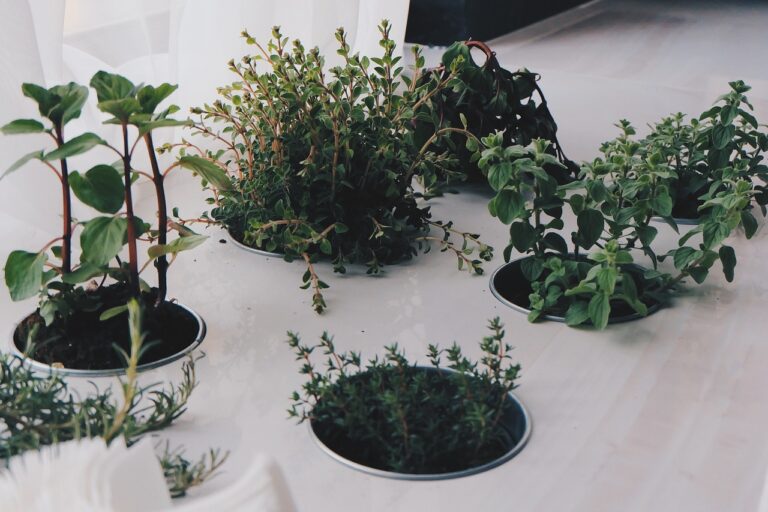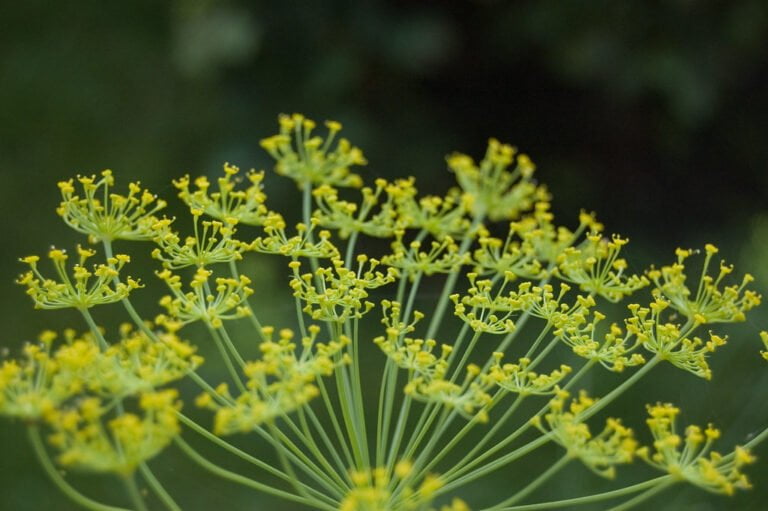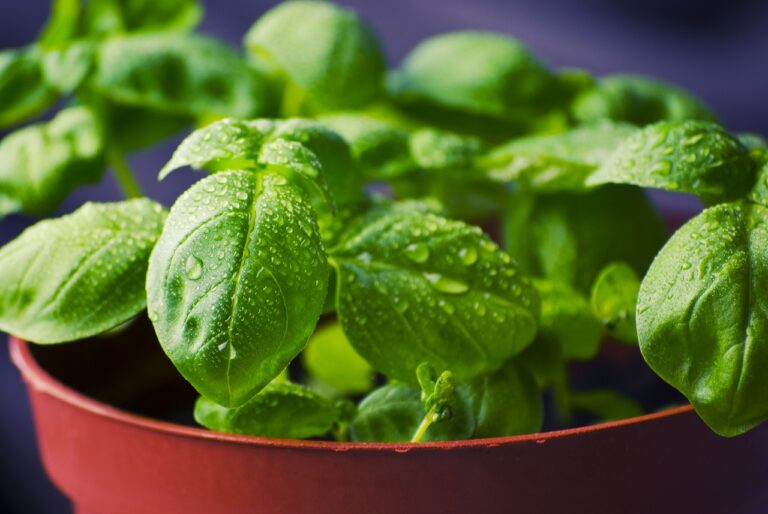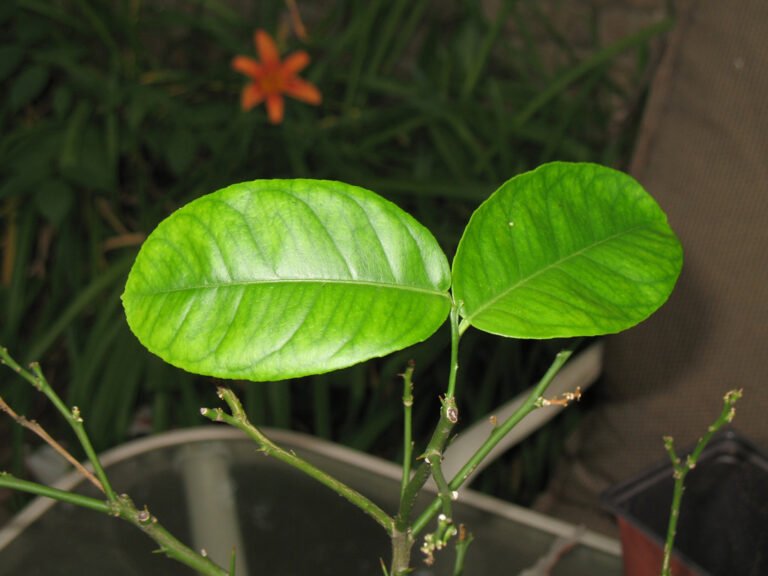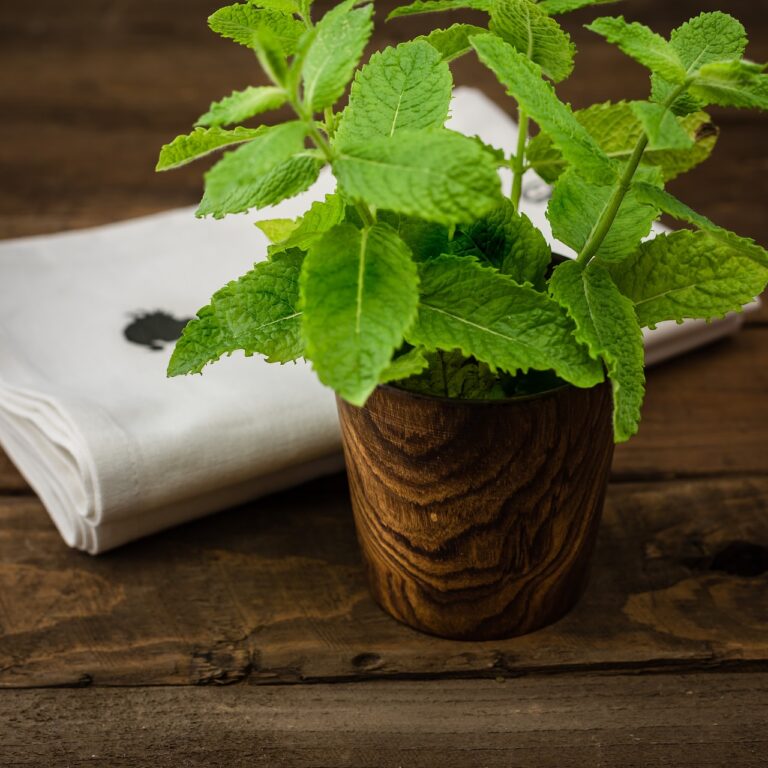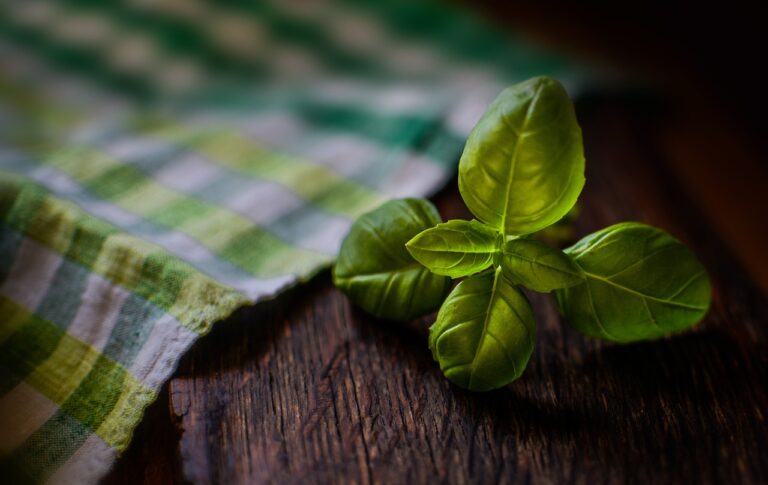Designing and Layouting a Themed Herb Garden With Companion Planting
When designing a themed herb garden with companion planting, pair herbs strategically for a healthy, pest-resistant ecosystem. Combine fragrant herbs like lavender with others to deter pests naturally. Consider compatibility in sunlight and water needs for best growth. Reflect on herb sizes and shapes for a visually appealing layout. Create a plan focusing on herb synergies to boost garden harmony. By maximizing companion planting benefits, you improve productivity and reduce the need for chemicals. Regularly inspect plants, prune for better yields, and rotate crops annually for continued success. Improve your herb garden with these practical strategies for a thriving ecosystem.
Understanding Companion Planting Basics
When immersing into the realm of gardening, understanding the fundamentals of companion planting is vital for nurturing a flourishing and harmonious garden ecosystem. In my herb garden, I have discovered that companion planting plays a pivotal role in fostering plant health, deterring pests, and attracting beneficial insects. By strategically pairing herbs that are good companions, I have established a more resilient and productive garden.
Companion planting in my herb garden involves thoughtfully selecting herbs that complement each other. For instance, planting basil near tomatoes not only boosts the tomatoes’ flavor but also helps repel pests that commonly impact tomato plants. The fragrant qualities of herbs like lavender can also serve as natural pest deterrents for neighboring plants, promoting a pest-resistant environment without the need for harmful chemicals.
Furthermore, companion planting in my herb garden has drawn a variety of beneficial insects such as ladybugs, lacewings, and bees. These insects play a pivotal role in pollination and pest control, contributing to the overall health of the garden ecosystem. By nurturing a diverse community of plants through companion planting, I have been able to create a balanced and sustainable garden that thrives with minimal intervention.
Selecting Complementary Herbs for Planting
When selecting complementary herbs for planting in your garden, it is important to consider their compatibility in terms of sunlight, soil, and water requirements to guarantee optimal growth. Choosing companion herbs that have similar needs will make sure they thrive together and support each other’s development. Some herbs that are beneficial to plant together include basil and tomatoes, as basil helps to enhance the flavor of tomatoes and also deters pests that commonly affect tomato plants. Mint is another herb that can be a great companion due to its ability to repel insects like ants and fleas, making it advantageous to plant near cabbage or tomatoes.
Creating a plant list of herbs that work well together can help you design a garden that not only looks visually appealing but also functions harmoniously. For instance, pairing rosemary with sage and thyme can create a fragrant and aesthetically pleasing herb garden corner. Considering the growth habits and sizes of herbs is also important to prevent overcrowding and make sure that each plant receives adequate sunlight and nutrients. By combining herbs with different textures, colors, and scents, you can design a diverse herb garden that not only looks beautiful but also supports the health and growth of each plant. Researching historical and traditional pairings of herbs can further enrich your garden design, creating a thematic and cohesive layout that is both practical and visually appealing.
Creating a Layout Plan for Harmony
To achieve harmony in your themed herb garden design with companion planting, start by strategically mapping out a layout plan that takes into account the compatibility and growth requirements of each herb. When creating your garden plan, think about which companion plants work best together based on their characteristics. Some herbs thrive when planted alongside specific companions, benefiting each other by deterring pests, enhancing growth, or improving flavor. It’s crucial to take into account the size, shape, and growth habits of each herb to make sure they complement rather than compete with one another.
For example, tall herbs like rosemary can provide shade for smaller, delicate plants such as cilantro, creating a microclimate that supports both varieties. Additionally, planting basil near tomatoes can enhance the tomatoes’ flavor and repel pests that may harm the tomato plants. Understanding the synergies between different herbs and companion plants will help you design a layout plan that promotes a harmonious and productive garden.
Maximizing Benefits of Companion Planting
Mapping a strategic layout plan for your themed herb garden with companion planting ensures that you maximize the advantages of pairing herbs and plants for improved productivity and natural pest control. Companion planting in your herb garden can greatly boost productivity by attracting beneficial insects for pollination and pest control. By strategically pairing herbs like basil, chives, and mint with your main herbs, you create a harmonious ecosystem that not only improves the flavor and growth of your herbs but also naturally deters pests. Additionally, incorporating herbs such as rosemary, sage, and parsley in your garden can provide natural protection against common garden pests, reducing the need for chemical interventions.
Understanding the benefits of companion planting in herb gardens is vital for achieving healthier plants and increased yields. By harnessing the power of beneficial insects and the natural defenses of certain herbs, you can create a thriving garden environment that is less reliant on pesticides and other harmful chemicals. This approach not only benefits your herb garden but also contributes to a more sustainable and eco-friendly gardening practice. By maximizing the benefits of companion planting in your herb garden, you can enjoy a bountiful harvest while supporting a balanced and diverse garden ecosystem.
Maintaining and Growing a Thriving Herb Garden
Maintaining a flourishing herb garden demands careful monitoring for pests and diseases to guarantee peak growth and yield. Regularly inspecting your herb plants for any signs of pests or diseases is essential in keeping a healthy garden. By catching and addressing issues early, you can prevent them from spreading and causing extensive damage to your herbs.
Pruning herbs is another important practice to make sure your garden thrives. Trimming back overgrown or dead branches not only promotes bushier growth but also improves the overall appearance of your herb garden. Additionally, regular pruning can lead to better harvest yields as it encourages the plants to focus their energy on producing more flavorful leaves.
Frequent harvesting of herbs is key to promoting new growth and ensuring a continuous supply. By regularly picking herbs, you prevent them from becoming woody and encourage the plants to keep producing fresh leaves. This practice also helps maintain the health and vitality of your herb garden.
Rotating crops annually in your herb garden is essential for preventing soil depletion and maintaining soil health. By changing the location of your herbs each year, you reduce the risk of nutrient depletion and minimize the buildup of pests and diseases in the soil. This practice also helps improve the overall health and productivity of your herbs.
Incorporating mulching techniques can help in retaining moisture in the soil, which is beneficial for herb growth. Mulch helps regulate soil temperature, reduce evaporation, and suppress weed growth, creating ideal conditions for your herbs to thrive. Additionally, using mulch can improve the aesthetic appeal of your vegetable garden while providing a protective barrier for your herbs.

